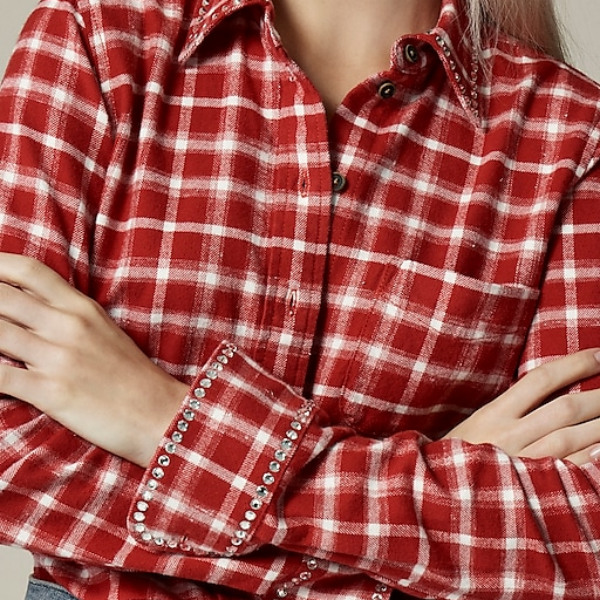Removing letters or graphics from a shirt can be a daunting task, especially if you’re unsure of the best approach. Whether your shirt has a name, number, or a design that you’d like to modify or remove entirely, knowing how to take letters off a shirt can save you time and money. Instead of tossing the shirt aside, you can either repurpose it or re-design it according to your current preferences. The process can range from simple methods that require household items to more advanced techniques with specialized tools. In this article, we’ll explore various methods of removing letters from shirts, discuss the materials you’ll need, and provide tips on preventing damage to the fabric. By the end, you will have a comprehensive understanding of how to successfully remove letters from your favorite shirts.
Contents
Understanding the Various Types of Lettering on Shirts
Before attempting to remove letters from a shirt, it’s essential to identify the type of lettering used. The method of removal may differ depending on how the letters are applied.
Screen Printing
Screen printing involves pushing ink through a stencil to create a design on the fabric.
- Durability: Screen printed letters tend to be durable and can be more challenging to remove compared to other methods.
- Removal Difficulty: Typically, this requires either specialized chemicals or intricate techniques to avoid damaging the fabric.
Heat Transfer Vinyl
Heat transfer vinyl involves applying a design made of vinyl to the fabric with heat.
- Presence of a Plastic Layer: These letters often have a plastic feel and may peel off if treated with heat.
- Ease of Removal: This type can often be removed using heat from a hairdryer or heat gun.
Embroidery
Embroidery is the stitching of threads to create designs or letters on fabric.
- Complexity of Removal: Removing embroidered letters typically requires cutting the threads, making it more labor-intensive.
- Care Needed: Extra care is necessary to avoid damaging the fabric surrounding the embroidery.
Inkjet Printing
Similar to screen printing, inkjet printing applies the ink directly onto the fabric.
- Vulnerability: Inkjet printed designs are generally less durable and can sometimes be washed or scrubbed away.
- Water and Chemicals: These designs may respond well to water and certain solvents, facilitating removal.
Tools and Materials Needed for Removal
Gathering the right tools and materials is crucial for effectively removing letters from a shirt.
Basic Household Items
You may not need specialized tools for some removal methods, as common household items can often suffice.
- Hairdryer or Heat Gun: This is valuable for softening adhesives in heat transfer vinyl and making the letters easier to peel off.
- Iron: An iron can also help soften materials, although you must be cautious with excess heat.
- Tweezers: For delicately pulling off letters or threads, tweezers can provide better precision.
- Surgical or Craft Knife: A fine tool for scraping off materials, especially when precise cutting is necessary.
Chemical Solvents
In some cases, you may need chemical solvents to assist in removal.
- Adhesive Remover: This can help dissolve adhesives from heat transfer vinyl or screen-printed designs. Look for products designed for fabric use.
- Acetone or Rubbing Alcohol: These solvents can help to break down adhesive materials, especially in printings.
- Laundry Detergent: A mild detergent may assist in removing ink or dyes, especially when combined with scrubbing.
Steps for Removing Letters from Different Types of Shirts
Every method will involve varied steps depending on the lettering technique. Below are approaches for some common types.
1.Removing Screen-Printed Letters
Removing screen printed letters can be tricky but is possible with the right techniques.
- Test Area: Always start by testing any chemicals on a small, inconspicuous area of the fabric to ensure they do not cause damage.
- Chemical Application: Apply a dedicated adhesive remover to the printed area and let it sit for several minutes to penetrate the design.
- Scraping: Using your fingernail or a craft knife, gently scrape the edge of the letter. Work slowly to minimize damage to the shirt.
- Repeat Process: If necessary, repeat the process until most of the print comes off before washing the shirt as normal.

2.Removing Heat Transfer Vinyl
Heat transfer vinyl is one of the easier materials to work with when it comes to removal.
- Apply Heat: Use a hairdryer or heat gun to apply heat to the vinyl letters. This should soften the material and make it easier to peel.
- Peel Away: Using tweezers, gently peel the letters off the shirt. Start at the edge and work your way across.
- Follow Up with Adhesive Remover: After removing the letters, you might see adhesive residue. Apply an adhesive remover to get rid of any leftover tackiness.
3Removing Embroidery
Removing embroidered letters demands more patience and care.
- Inspect the Threads: Look closely at the threads to determine how they are secured to the fabric.
- Cut with Precision: Use a seam ripper or a small pair of scissors to carefully cut the threads, ensuring you only cut the embroidery and not the fabric beneath.
- Remove Loose Threads: As you cut, be sure to pull any loose threads out of the fabric gently.
4.Removing Inkjet Printed Designs
Inkjet printed designs can sometimes be removed with simple techniques.
- Damp Cloth: Lightly dampen a cloth and place it over the printed area to loosen the ink.
- Scrubbing: Using a gentle scrubbing motion, work at the design to lift the ink from the fabric.
- Laundry Detergent: If some ink persists, apply a small amount of laundry detergent and scrub lightly with a soft brush.
Prevention: Tips for Future Shirt Care
Knowing how to take letters off a shirt is essential, but preventing unwanted prints is equally important.
Choose Quality Apparel
Choosing high-quality shirts can often lead to easier removals in the future.
- Invest in Quality: Opt for shirts that have designs printed with high-quality materials. This ensures that, should removal be necessary, proper techniques can be effectively executed.
Regular Maintenance
Regularly maintaining your clothing can prevent issues from escalating.
- Avoid Excess Heat: Do not expose your shirts to excessive heat during washing or drying. This can make designs more permanent.
- Gentle Washing: When washing, opt for gentle cycles and lower heat settings. This helps to preserve printed materials.
Consider Customization Options
If you frequently change designs or styles, consider using removable options.
- Iron-on Transfers: Look into using printable iron-on transfer paper designed for easy removal.
- Vinyl Stickers: Temporary vinyl lettering can allow for custom designs without commitment.
Advanced Options: Professional Help
Sometimes, complex designs require the help of professionals.
Professional Removal Services
If you feel uncertain about your skills, there are businesses that specialize in custom clothing alterations.
- Alterations Shop: Many clothing alterations shops can remove letters and restore your clothing’s original look.
- Custom Printing Services: These services often employ advanced techniques to ensure quality removal without affecting fabric integrity.
Re-Purposing Options
Consider options to repurpose your shirt if removal isn’t your only goal.
- Craft Projects: Use parts of the shirt fabric for crafting or DIY projects, which can include sewing or quilting.
- Upcycling: Transform worn or unwanted shirts into bags or other useful items, giving the fabric a new life.

Conclusion
Learning how to take letters off a shirt is a valuable skill for any wardrobe maintenance enthusiast. Whether you want to remove a name from a jersey or make room for a new design, knowing the right techniques can save you time and money. Each method outlined in this article highlights different approaches based on the lettering type. Additionally, preventive care practices can help maintain the integrity of your shirts, reducing the chances of needing letter removal in the future.
Always remember that while removing letters can seem straightforward, it’s important to take your time and assess the best strategy for your specific shirt. If in doubt, consider professional assistance. By making informed decisions and utilizing the methods described, you can keep your wardrobe fresh and personalized, reflecting your evolving style.


